What Is Impression Share? Boost Your Ad Performance Today
- Chase McGowan

- Jul 28
- 10 min read
Think of the Google Ads auction like trying to get your product on a store shelf. Impression share tells you what percentage of the time you actually made it onto that shelf when a qualified customer walked by.
This isn't just another metric to track; it’s a direct measure of your market visibility. It answers the fundamental question: Are you even showing up?
Your First Step to Dominating Google Ads
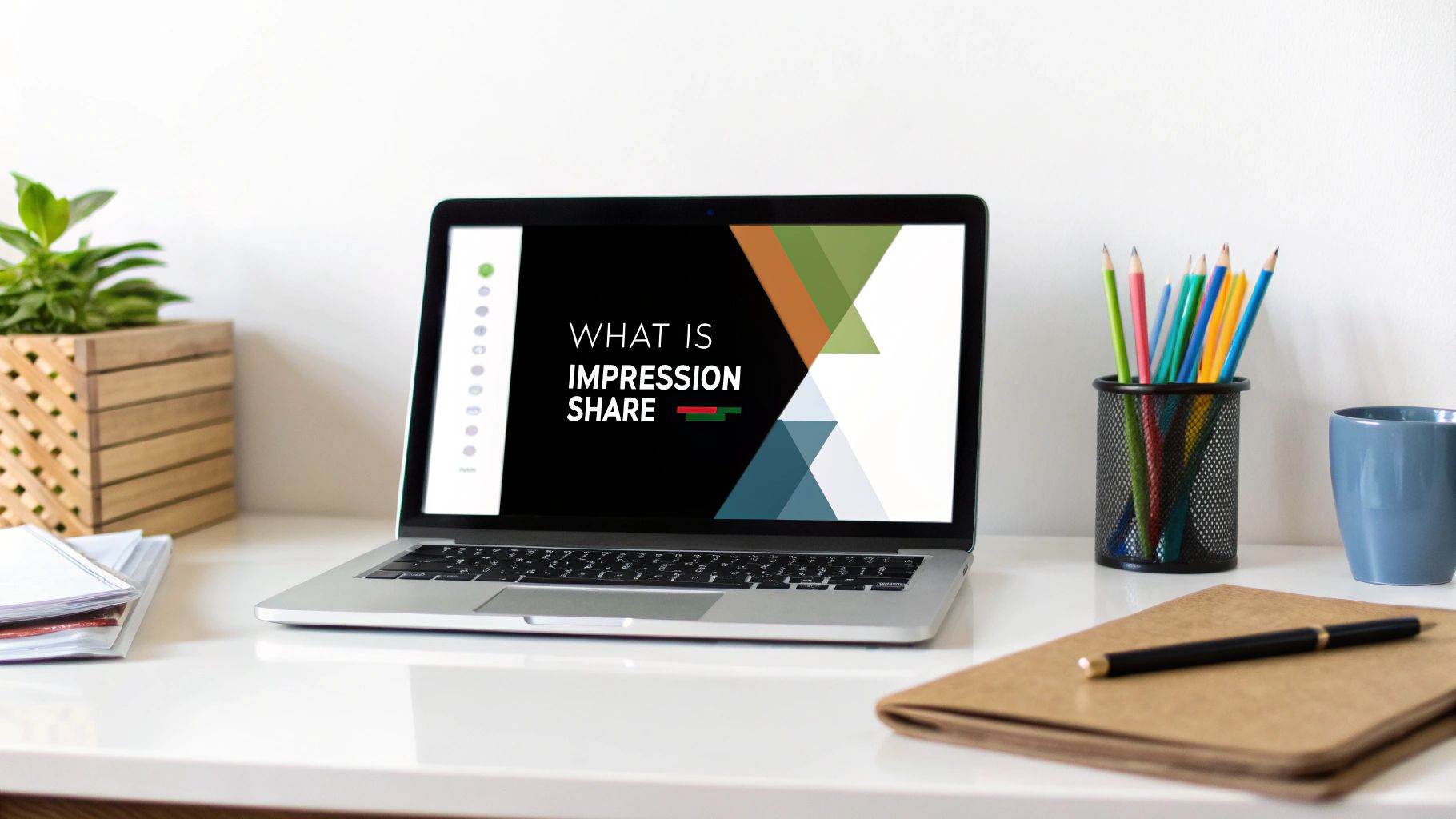
Understanding impression share is the key to reframing your entire advertising goal. It’s not just about getting clicks; it’s about strategically owning your space in the market.
Think of it as a pie. That whole pie represents every single time your ad could have shown to a perfect customer. Your impression share is simply the size of your slice.
A low score is an immediate red flag. It’s a sign that your competitors are getting their ads in front of customers you’ve earned the right to reach. Many bloated, overpriced agencies gloss over this, but as an expert consultant, I see it as the most critical starting point for any campaign audit.
Defining Your Slice of the Pie
The concept is surprisingly simple. For example, if your campaign was eligible to show up for 5,000 searches but only appeared 4,000 times, your impression share is 80%. You were on the shelf 8 out of 10 times.
But what about the other 20%? That's lost opportunity. This single number tells a powerful story about your campaign’s health, budget, and competitive strength. It's not a vanity metric; it’s a diagnostic tool that points directly to hidden growth potential. You can dive deeper into its impact on campaigns with various marketing resources.
A low impression share isn't a failure—it's an opportunity. It tells you exactly where you have room to grow and which competitors you can start pushing out of the way. This is where a focused, individual consultant provides immense value over a large agency.
Instead of throwing generic advice at the problem, a specialist looks at why your slice is small. I dig into the root causes—is your budget too low? Is your Ad Rank suffering? This targeted approach ensures every dollar you spend works harder to claim a bigger piece of that pie, leading to more sustainable and profitable growth.
To make this crystal clear, let's break down the key ideas you need to know.
Impression Share Key Concepts at a Glance
This table breaks down the core components of impression share for easy understanding.
Concept | What It Means | Why It Matters to You |
|---|---|---|
Impression Share (IS) | The % of times your ad showed vs. the total times it was eligible to show. | It's your overall market visibility score. A low number means you're missing out. |
Eligible Impressions | The total number of times Google determined your ad could have been shown based on your targeting. | This is the "whole pie." It shows you the total size of your immediate opportunity. |
Lost IS (Budget) | The % of time your ad didn't show because your budget was too low. | This is the most straightforward problem to fix. It tells you if you're underfunding your campaigns. |
Lost IS (Rank) | The % of time your ad didn't show due to poor Ad Rank (low bids or low Quality Score). | This is a more complex issue. It means your ads or bids aren't competitive enough, even if you have the budget. |
Seeing these metrics laid out like this makes it obvious where the leaks are in your account. A low Lost IS (Budget) means you just need more funding, while a high Lost IS (Rank) signals deeper problems that need an expert touch to solve—something a junior account manager at a big agency might miss.
Why Impression Share Is Your Most Important Health Metric
If your Google Ads account had a pulse, this would be it.
Forget the vanity metrics like raw clicks or impressions that bloated, overpriced agencies love to show you. Any experienced consultant knows the real story—the actionable story—is hidden a layer deeper. A low impression share is a giant red flag, exposing critical issues like a capped budget or weak ad quality that are quietly killing your growth.
It’s the single best measure of your competitive standing and how much of the market you’re actually reaching. A high impression share tells you your campaigns are healthy and winning their auctions.

A low one, on the other hand, is a clear warning sign. It means competitors are eating your lunch, showing up for searches and grabbing customers who should have seen your ads instead.
The Diagnostic Tool Big Agencies Overlook
This is where a true expert separates themselves from a typical agency. Most large firms simply lack the hands-on specialization to use impression share as the powerful diagnostic tool it is. For me, as a dedicated consultant, it’s the very first place I look to find hidden weaknesses and untapped opportunities.
A low impression share isn't just a number on a report; it's a map pointing to exactly where your money is being wasted and where your competitors are winning. It’s the starting point for a strategy that stops guessing and starts winning.
The real strategic power of this metric kicks in after a campaign has matured past its initial testing phase. In the beginning, you’re throwing things at the wall to see what sticks. But once you’ve found keywords that work, watching your impression share is absolutely critical for scaling up smart.
This focused approach is the core difference between hiring a consultant and a big firm. Instead of getting a generic report from a junior account rep, you get a precise action plan from an expert. We diagnose the real problem—whether it’s budget limits or ad rank issues—and we fix it. This is a fundamental part of the [top search engine marketing strategies that boost your ROI](https://www.cometogether.media/single-post/top-search-engine-marketing-strategies-to-boost-your-roi).
An agency might just tell you to spend more money. A specialist consultant shows you how to spend it smarter to reclaim your rightful market share and drive real, profitable growth.
Decoding the Different Types of Impression Share
To really get a grip on your ad visibility, you have to look beyond the main impression share number. It's a start, but it's not the whole story. Google Ads breaks this metric down into different types, each telling you something unique about where—and why—you’re either winning or losing.
This is exactly where an experienced consultant makes a difference over a big agency. An agency might hand you a report with a single, blended impression share number that looks decent on the surface. The problem? That one number can hide a ton of performance issues. A specialist, on the other hand, will dissect each type to find the real opportunities for growth.
The visual below shows the basic idea: the impressions you actually get are just a piece of the entire pie you could have won.
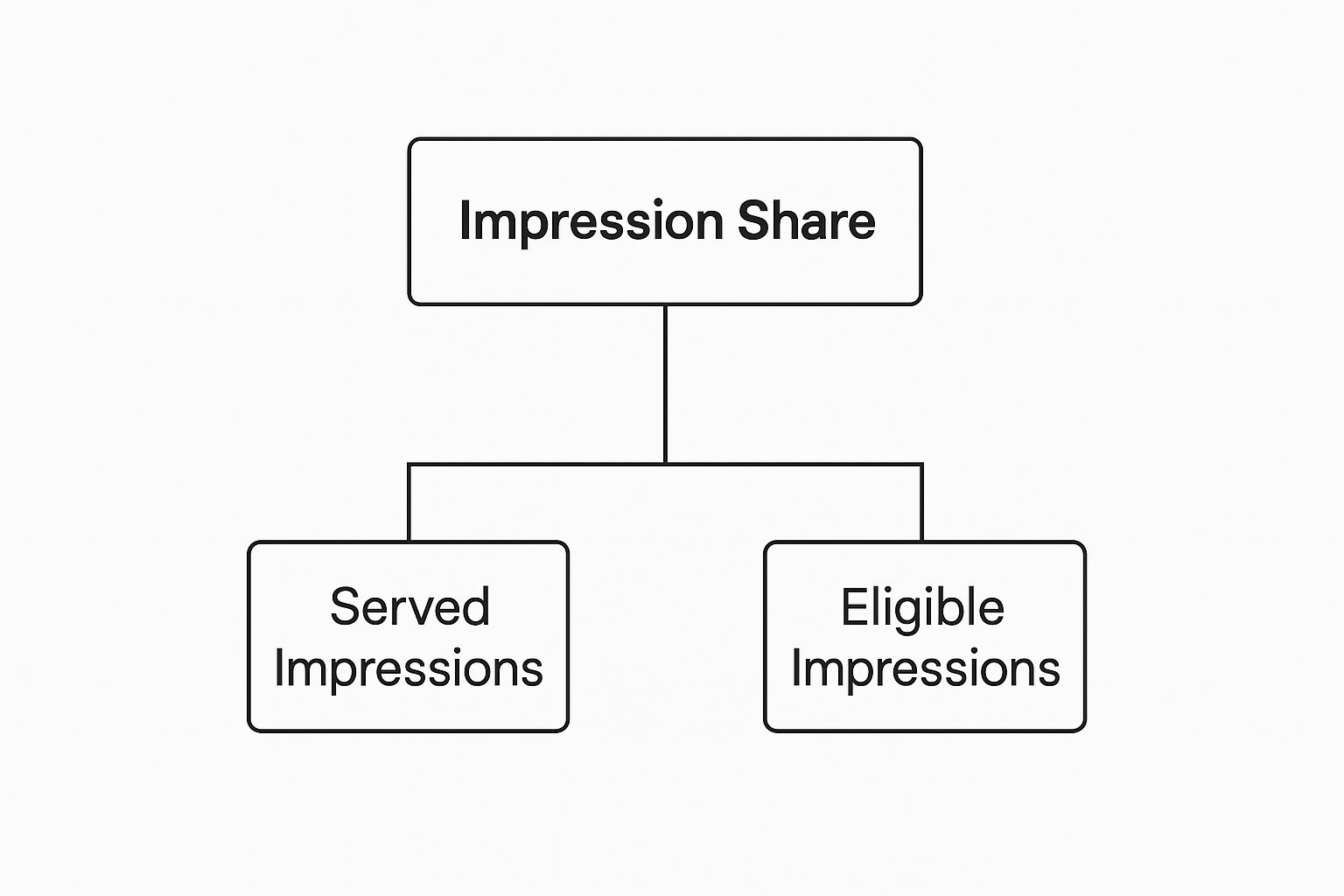
My job as a consultant is to figure out why you're missing out on the rest of that pie and then close that gap. It's about turning missed opportunities into profitable clicks.
The Most Important Impression Share Metrics
Google Ads offers a handful of these metrics, but a few are absolutely vital for diagnosing what's going on with your campaigns. Knowing the difference is what separates a generic, "spray and pray" agency strategy from one that's surgically precise.
Here’s a quick overview of the key impression share metrics you need to watch. Understanding what each one measures is the first step to improving them.
Comparing Impression Share Metrics
Metric Type | What It Measures | What It Tells You |
|---|---|---|
Search Impression Share | Your visibility on the Google Search Network. | How often you appear for your targeted keywords. A direct measure of market share. |
Display Impression Share | Your visibility on the Google Display Network (websites, apps). | Your reach across Google's partner network. Less about intent, more about awareness. |
Search Top Impression Share | The percentage of impressions appearing above organic results. | If you're visible but not in a premium spot. Shows you're in the game but maybe on the bench. |
Search Absolute Top Impression Share | The percentage of impressions in the #1 spot. | How often you're dominating the auction. This is the prime real estate that drives the best traffic. |
This table clarifies the differences, but the real magic happens when you see how they work together.
For example, a high Search Impression Share but a low Top Impression Share tells me you're visible, but you’re probably stuck at the bottom of the page where nobody looks. That’s not a win.
I see this all the time. A new client comes to me with a 70% Search Impression Share that their last agency was celebrating. But when I dig in, their Absolute Top IS is a measly 5%. They were showing up, sure, but almost never in the money-making #1 spot. That's not a success story; it’s a massive, expensive missed opportunity that a specialist can spot and fix fast.
The Two Thieves of Your Impression Share
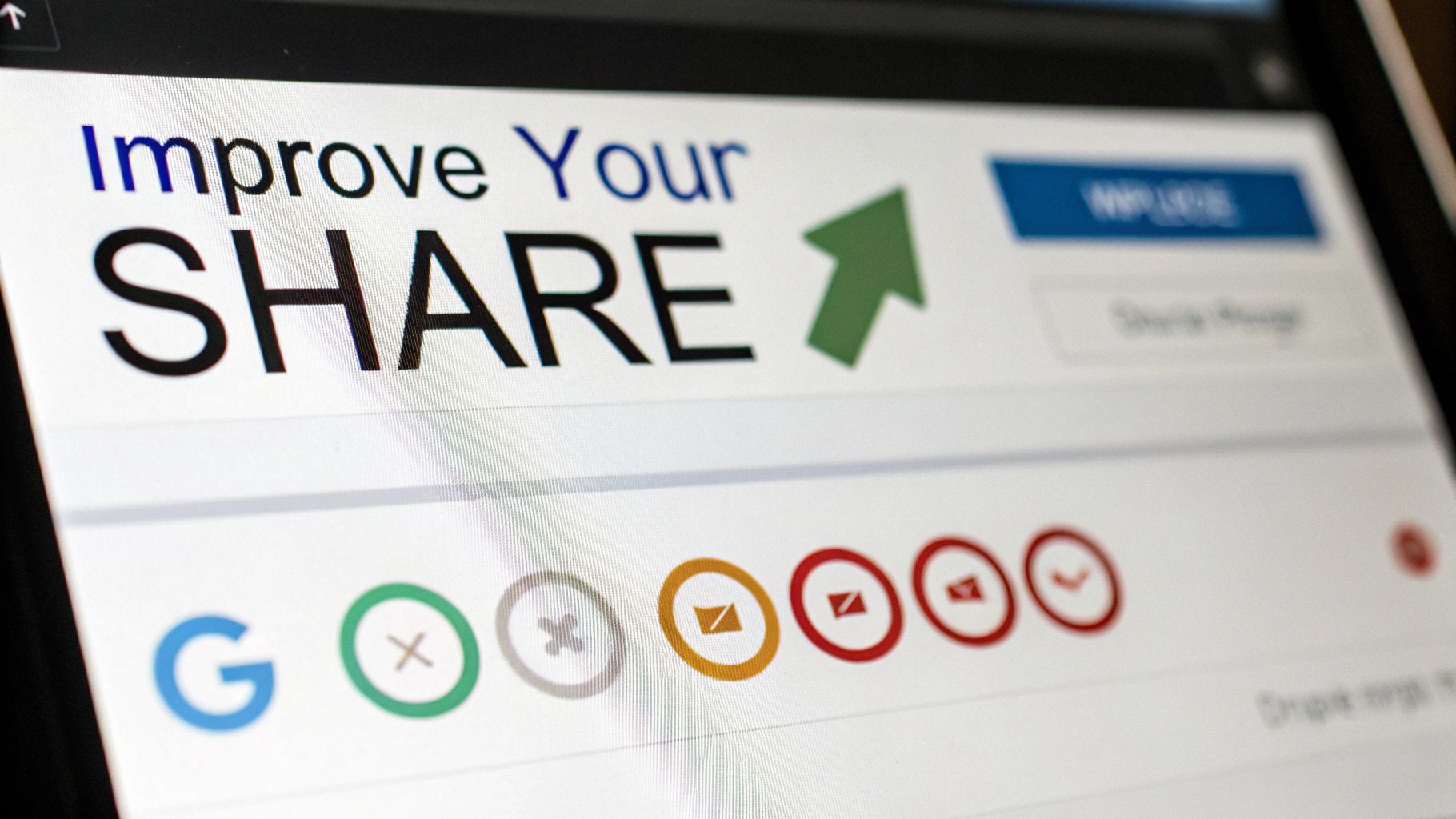
When your ads don't show up, it isn’t just bad luck. It’s because your impression share is being actively stolen by two main culprits inside your Google Ads account: Budget and Rank. Figuring out which one is the problem is the first step toward getting your visibility back.
The first thief is easy to spot. Lost Impression Share (Budget) means your campaign simply ran out of money for the day. Your ads were eligible and performing, but the daily budget tapped out too early. Google had to bench you while your competitors stayed in the game.
The second thief, Lost Impression Share (Rank), is much trickier. This happens when you did have the budget, but your ads were still passed over because their Ad Rank was too low to compete. Ad Rank is Google’s formula for deciding ad position, and it’s heavily influenced by your bid and, more importantly, your Quality Score.
The Agency's Shortcut vs. The Consultant's Strategy
Faced with these thieves, a bloated, overpriced agency often gives one lazy answer: "Spend more money." This brute-force approach might fix a budget problem, but it does absolutely nothing for a low Ad Rank. In fact, it just throws more money at a broken system.
This is where my advantage as an individual consultant becomes yours. Instead of taking the easy path, I dig into the why.
An agency sees a low impression share and writes you a bigger invoice. An expert consultant sees it as a puzzle. Solving that puzzle—by improving ad copy, landing pages, and keyword relevance—is what drives real ROI, not just higher costs.
My job is to diagnose which thief is at work and apply the right solution. If you're losing impressions to budget, we can strategically reallocate funds or prove the case for an increase. But if you’re losing to rank, that's where real expertise comes in.
We'll focus on what truly improves Ad Rank without just throwing more money at bids:
Elevating Quality Score: I'll refine your ad copy and landing page experience to make them hyper-relevant to what users are searching for—something Google actively rewards.
Optimizing Bids: We'll analyze your bidding strategies to make sure you’re competitive without needlessly overpaying for clicks.
Improving Ad Relevance: We will ensure there's a tight, logical link between your keywords, ad groups, and the creative you're running.
This surgical approach stops the thieves from stealing your visibility and makes your ad spend work smarter, not just harder. I don't just patch the leak; I fix the pipe.
The Consultant's Edge in Reclaiming Lost Impressions
This is where you see the real difference between a true expert and an overpriced, bloated agency.
When faced with a low impression share, an agency’s first move is almost always a blunt instrument: "you need to increase your budget." But a seasoned consultant sees a puzzle to solve—one that requires surgical precision, not just a bigger check.
Let’s picture two businesses. The first is with "Agency A." They get a generic monthly report showing a low impression share, and the only recommendation is to spend more money. It’s a lazy, volume-focused approach that treats your budget like it’s an infinite resource.
The second business partners with an expert consultant. Instead of a surface-level glance, I dive deep. I don’t just see a low number; I investigate why it’s low.
A big agency often manages your account from a distance, using a one-size-fits-all playbook. As your consultant, I get into the trenches with you, treating your business and your budget as if they were my own.
In this scenario, I uncover a critical mismatch between a high-value keyword and its corresponding ad copy. This disconnect was tanking Ad Rank and causing a 20% loss of impression share. By rewriting the ad copy to perfectly align with what the user was searching for, I fix the root of the problem.
The result? Visibility shoots up, and more importantly, so does ROI. This is the difference between a volume-focused agency and a results-obsessed partner. If you're looking for a more personalized approach, it's worth understanding [why hiring a senior Google Ads consultant beats working with a bloated PPC agency](https://www.cometogether.media/single-post/why-hiring-a-senior-google-ads-consultant-beats-working-with-a-bloated-ppc-agency).
A consultant’s edge lies in this kind of detailed, strategic thinking. I don't just push for higher spending; I find and fix the underlying issues that are costing you impressions, clicks, and customers.
Frequently Asked Questions About Impression Share
Here are answers to a few common questions I get from clients about impression share.
What Is a Good Impression Share?
There’s no magic number here. A “good” impression share depends entirely on your industry, your goals, and frankly, your budget.
If you’re in a blood-red, competitive market, hitting a 40-50% impression share might be an incredible win. But if you operate in a tiny niche, you should probably be aiming for 80% or higher. The real goal isn't just getting a high score; it's achieving a profitable one.
This is a classic difference between hiring a consultant and a big agency. An agency might chase a 90% share at all costs, burning through your budget and killing your ROI. I focus on finding that sweet spot where your visibility drives maximum profit, not just maximum spend.
Should I Aim for 100% Impression Share?
Almost never. Chasing a 100% impression share is one of the fastest ways to waste money and a dead giveaway of inefficient account management.
Trying to show up for every single search means you’ll inevitably overpay for low-quality clicks and start bidding on keywords that are barely relevant to your business. This sends your acquisition costs through the roof.
A consultant’s job isn’t to spend your entire budget capturing every possible impression. It's to strategically capture the right impressions—the ones most likely to convert—to get you the best return on your investment.
Instead of burning cash for total visibility, a much smarter approach is to dominate the most valuable segments of your market where the real money is. This is the kind of strategic guidance an expert consultant provides that you won't get from a large, factory-like agency.
How Do Performance Max Campaigns Affect Impression Share?
Performance Max (PMax) really throws a wrench in the works. Because its impression share metric lumps Search and Shopping impressions together, the numbers look very different from what you're used to.
Data consistently shows PMax campaigns have a lower overall impression share than standard Shopping campaigns. A common mistake I see is people applying old benchmarks to this new campaign type, which leads to bad decisions. For a deeper dive into controlling your costs, you can read our guide on [what cost per acquisition is and how to lower it](https://www.cometogether.media/single-post/what-is-cost-per-acquisition-how-to-lower-it).
Understanding these nuances is what separates a specialist from a generalist agency that might not even know what to look for.
Ready to stop guessing and start winning? At Come Together Media LLC, I provide the one-on-one expert guidance that bloated agencies can't match. Book a free consultation today and let's uncover your true growth potential.




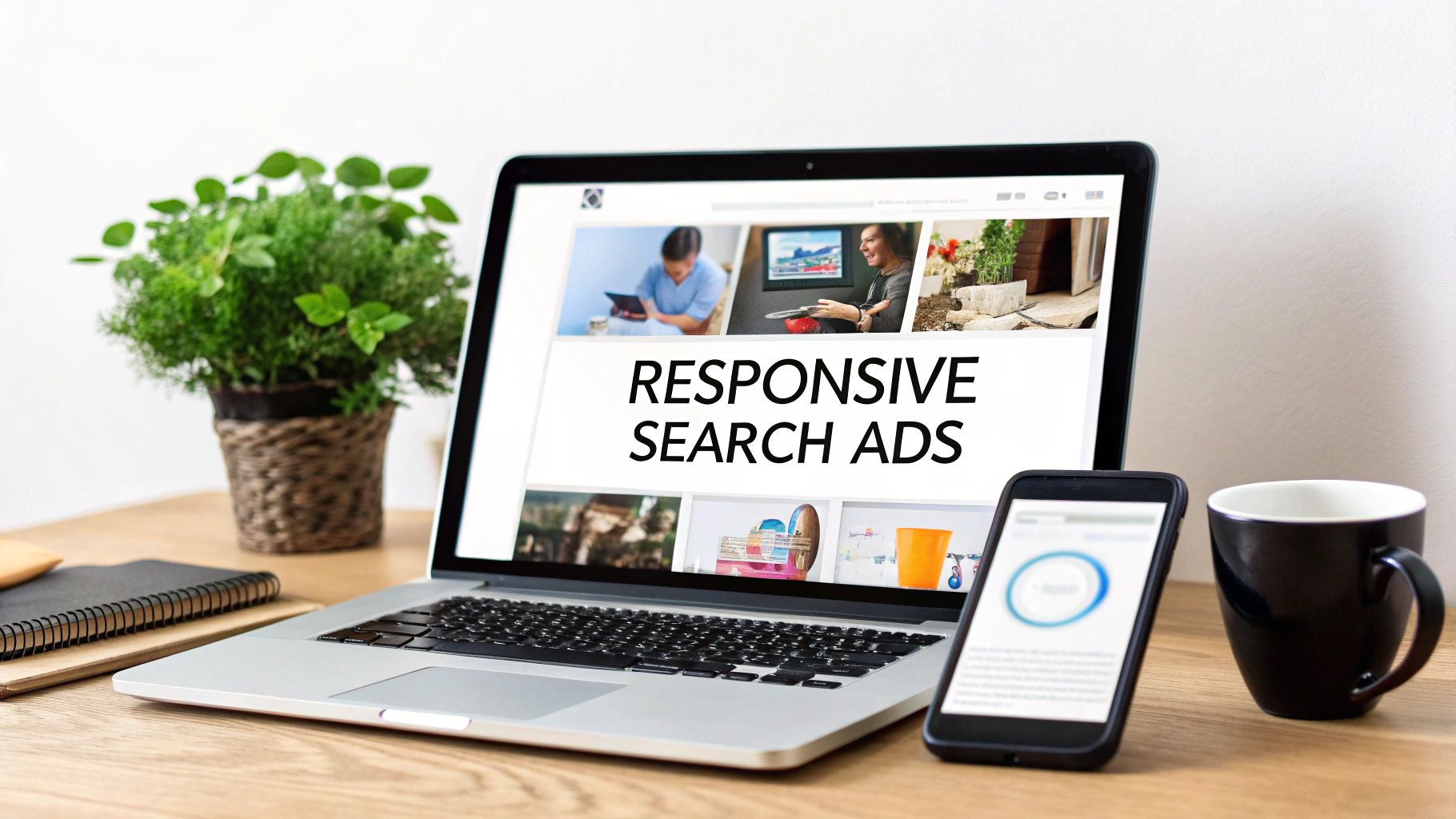
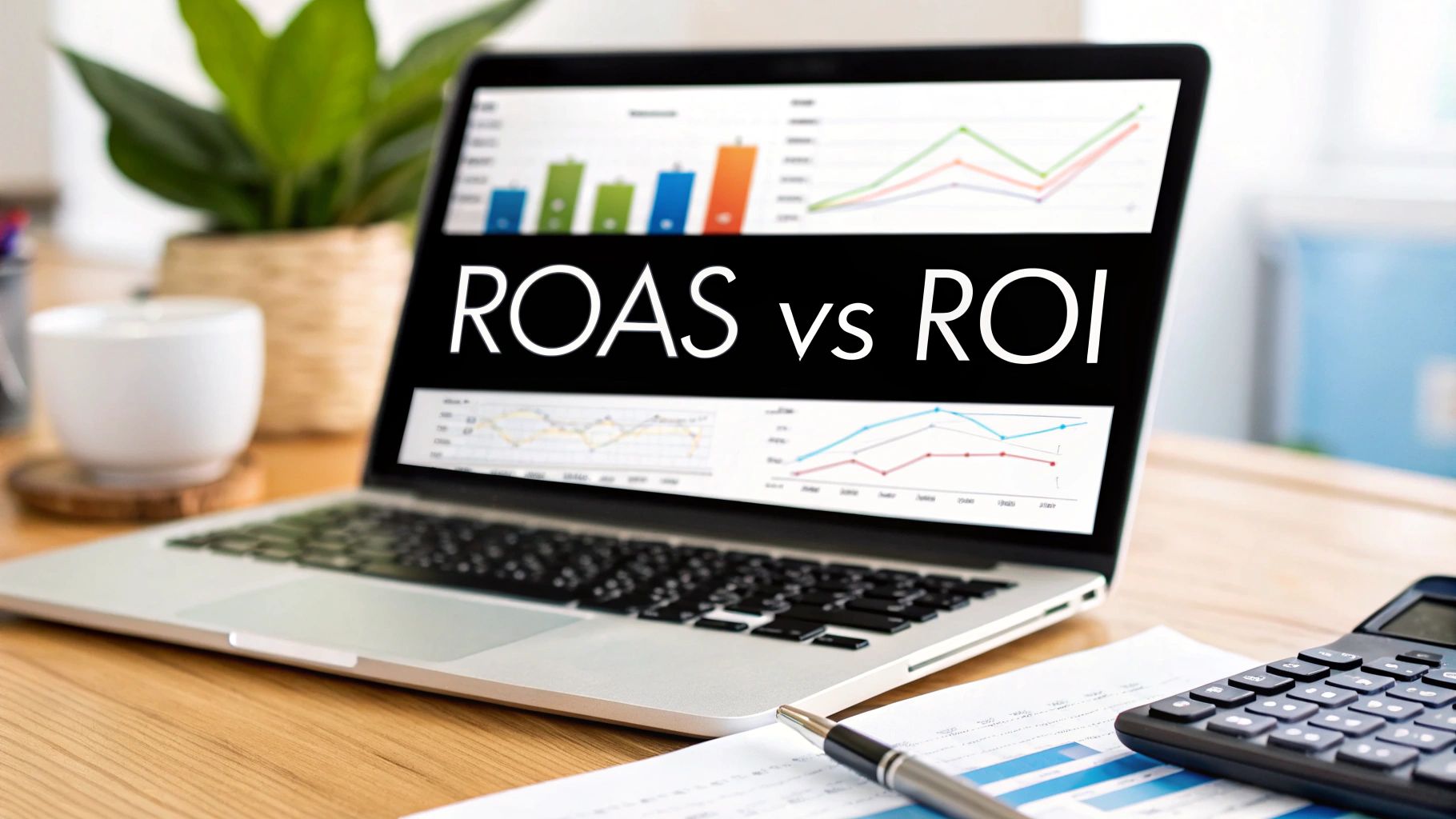
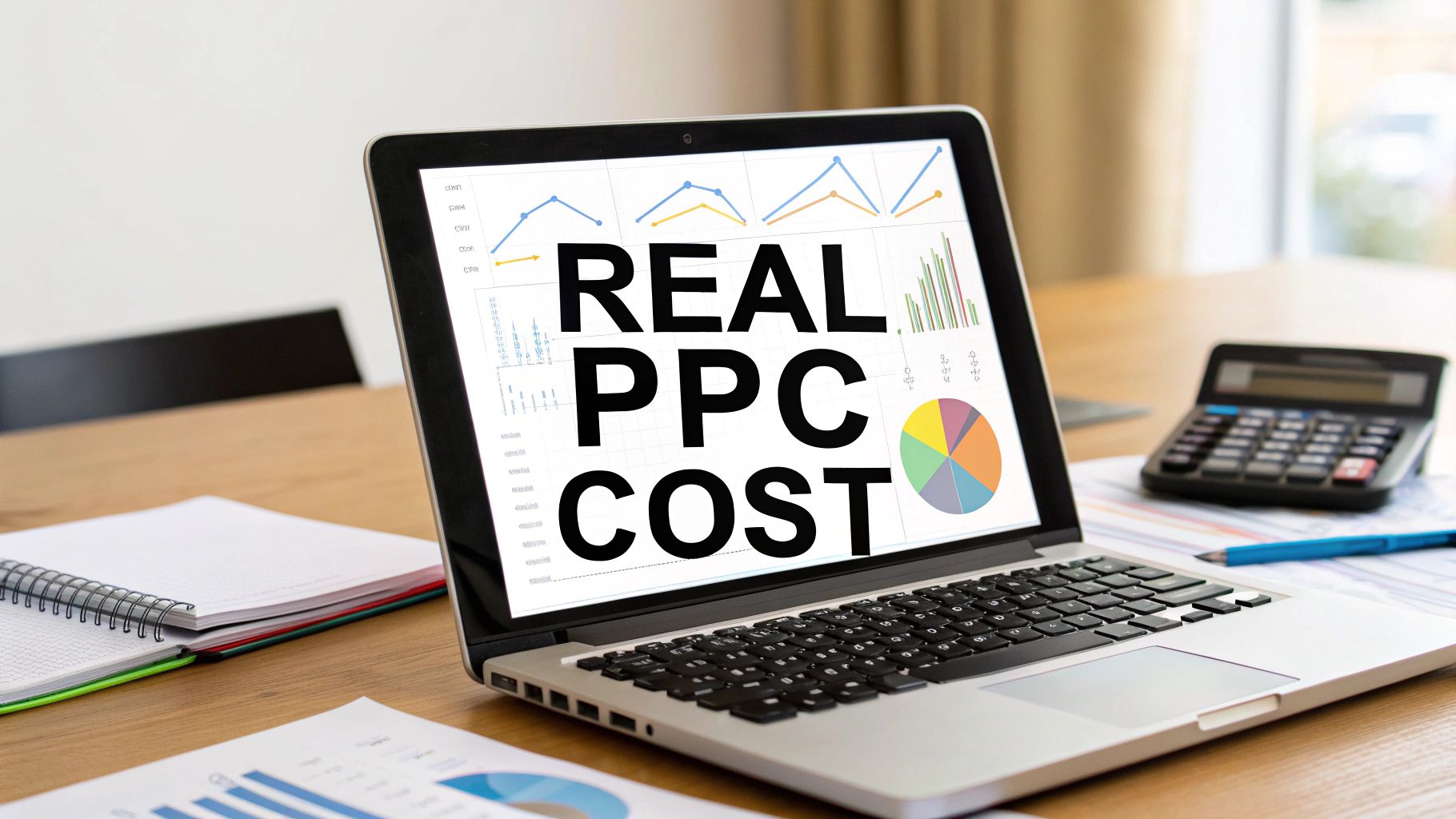
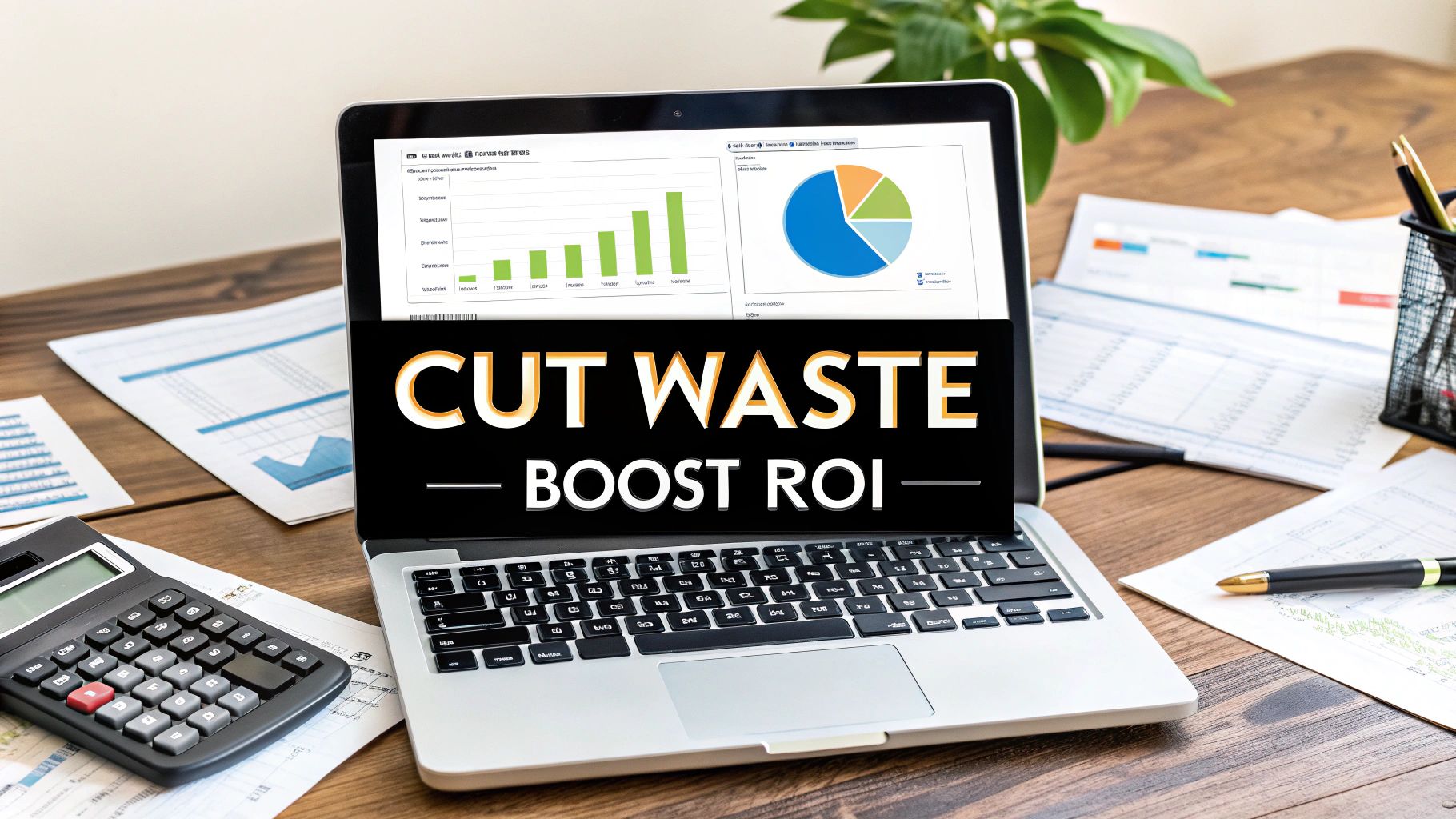
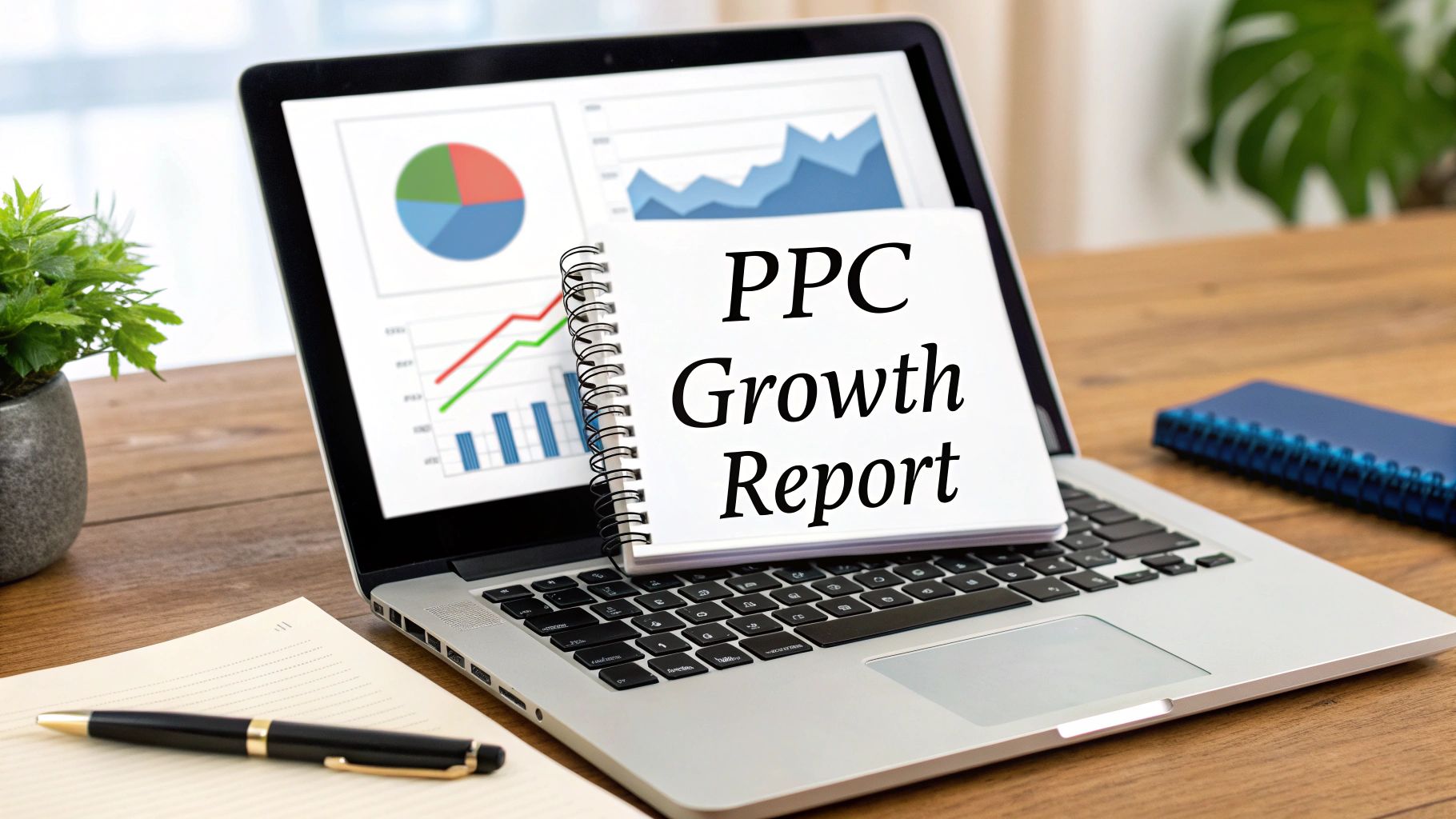
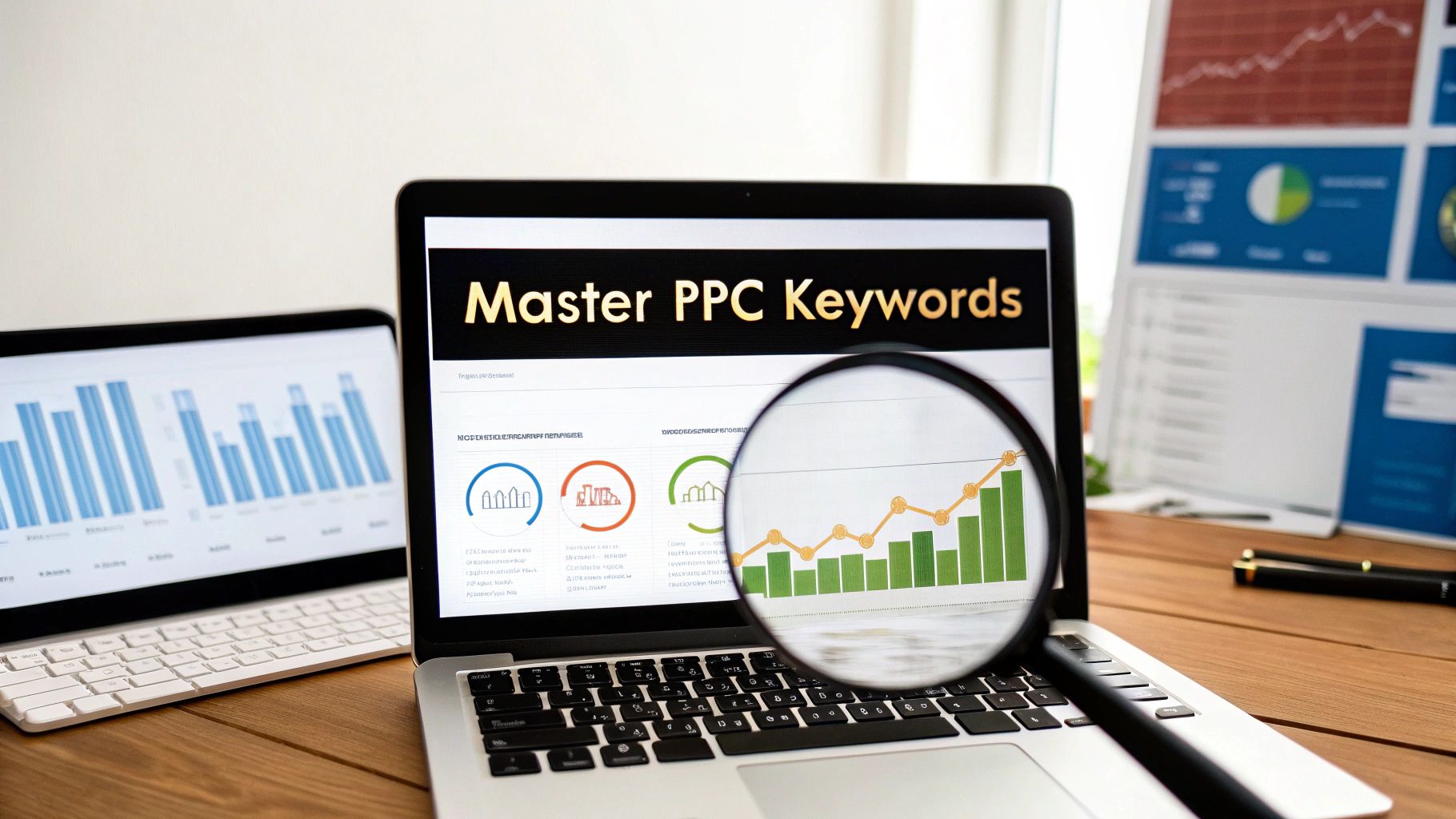
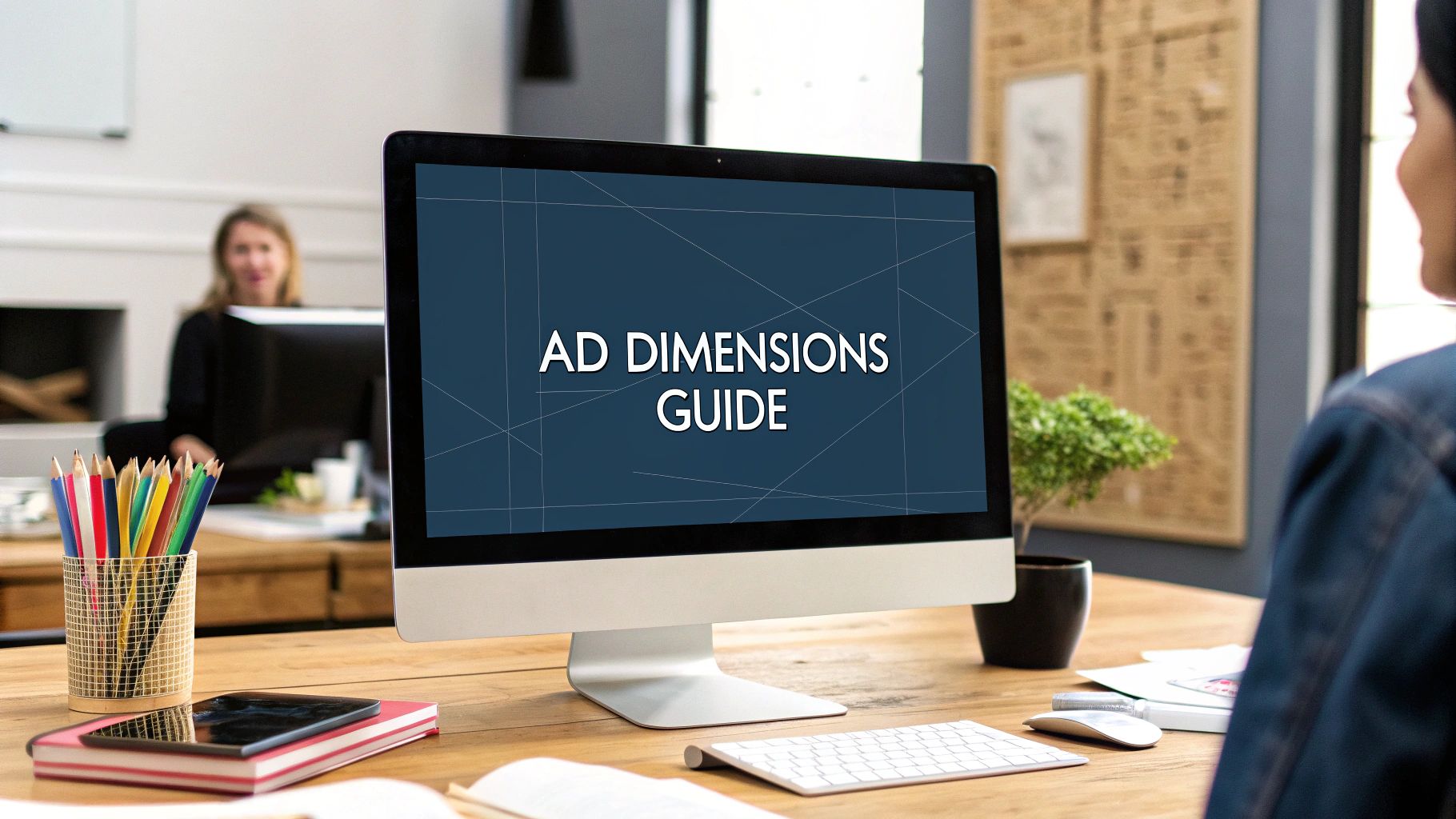
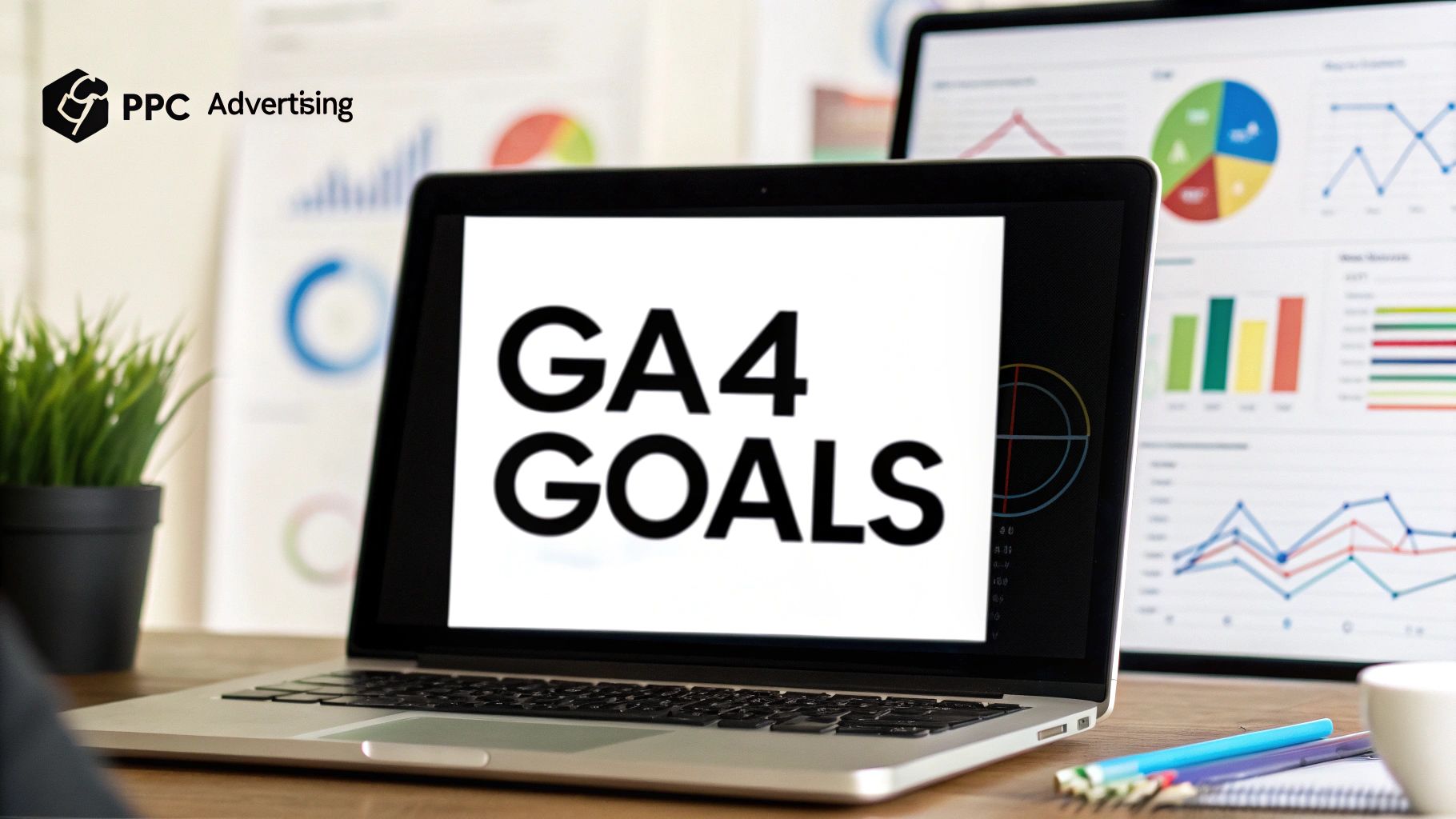
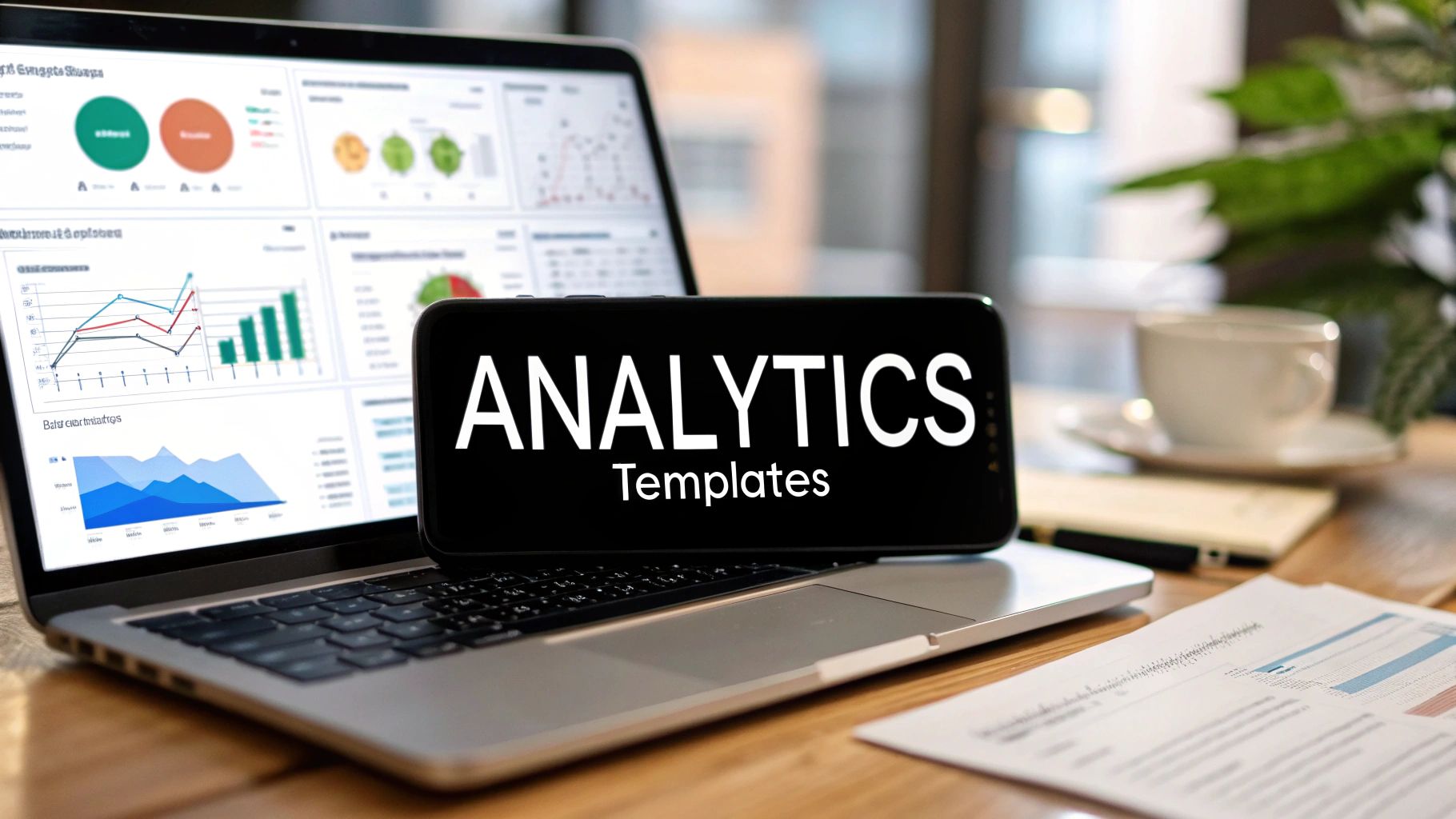
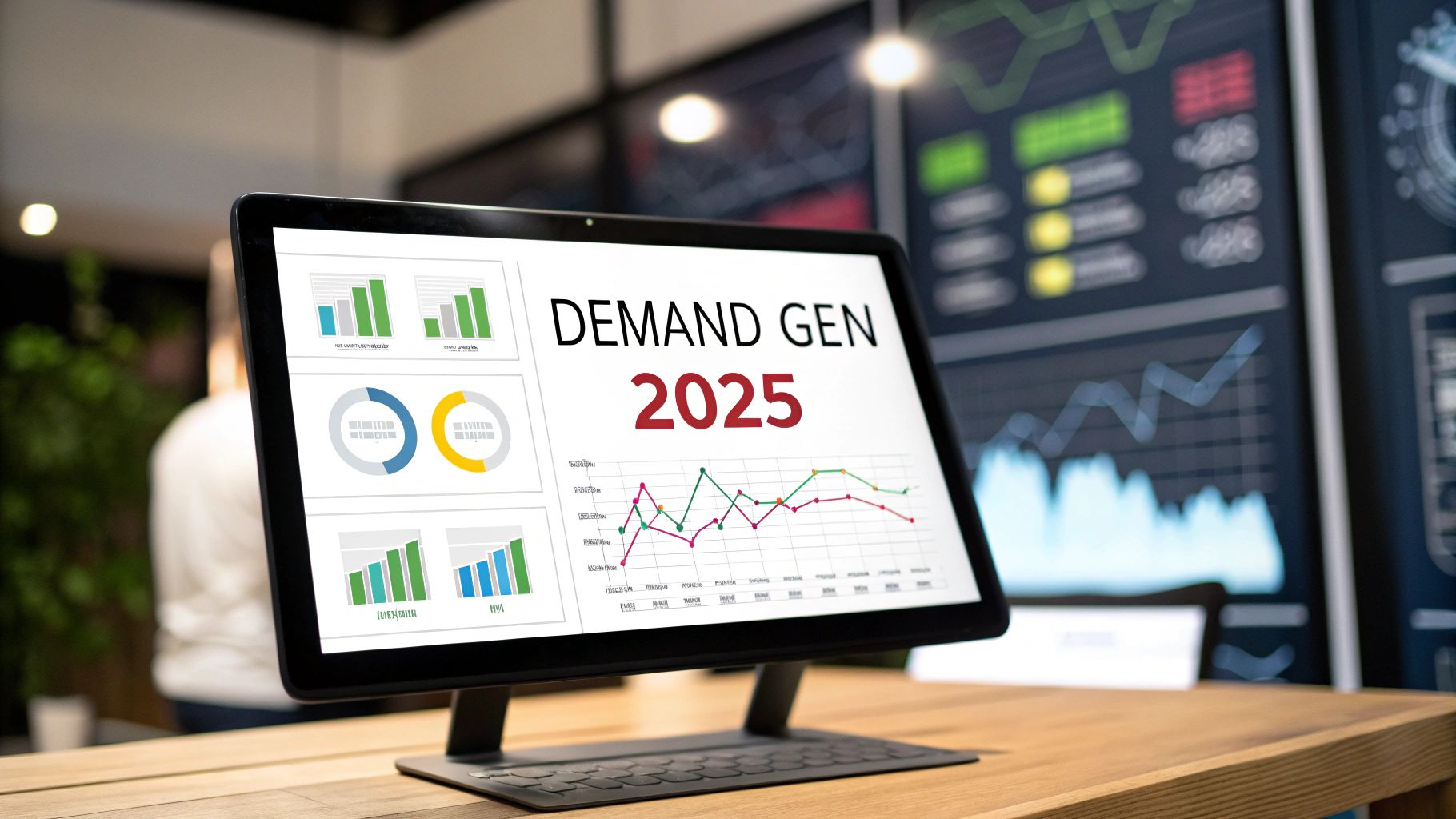
Comments